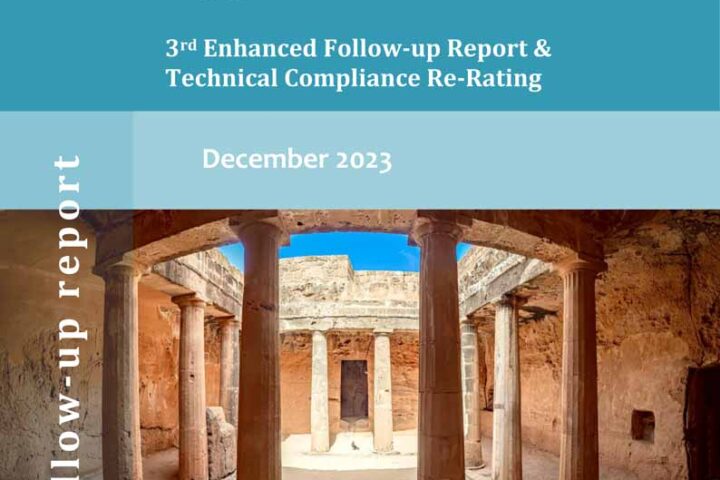“Challenges remain in high levels of private and public sector debt, sizable NPLs, external imbalances, and the small size of the economy, exposing
DBRS Ratings has confirmed the
DBRS has also confirmed the Short-Term Foreign and Local Currency – Issuer Ratings at R-4 and maintained the Stable trend.
.png)
The rating agency said that the positive trend reflects the view that
After better-than-expected results for most of 2017, real GDP growth is now forecast to be 3.7% for the full year – compared to a previous forecast of less than 3% – and projected at around 3% in 2018 and 2019. Likewise, the forecast for the fiscal surplus has been revised upwards to 1.0% of GDP in 2017 – from 0.2% – and rising to be above 1.3% over the next two years.
As a result of the stronger-than-expected developments and a partial early debt repayment, the government debt ratio is set to fall below 100% in 2017, one year earlier than initially estimated in the government’s Stability Programme in April.
At the same time, banks’ non-performing loans (NPLs) continue to decrease.
Improvements in DBRS’s building blocks of “Fiscal Management and Policy”, “Debt and Liquidity”, and “Economic Structure and Performance” were the key factors for the trend change, the agency said.
The ratings reflect
However, the ratings also underline the depth of
On the fiscal front,
The fiscal deficit shifted from 5.7% of GDP in 2011 to a small surplus of 0.5% in 2016. Over the next four years, the budget position is expected to remain in a healthy surplus above 1%, supported by strong revenues. The government is also aiming to maintain a small structural surplus, above its medium-term objective of a structural balance.
Adopted reforms to strengthen fiscal management, including the reform to the wage indexation system, together with expenditure ceilings embedded in the Fiscal Responsibility and Budget Law, are expected to reinforce the sustainability of public finances.
Growth gathers momentum
Along with the better-than-expected fiscal performance, growth has gathered momentum in 2017.
Growth has been broad-based, with tourism, shipping, professional services, manufacturing, and construction contributing to growth. The outlook is for a continued solid recovery in the coming years, driven by consumption, investment, and exports.
Downside risks to the outlook are related to a less favourable external environment. Still-high, albeit declining, youth unemployment and long-term unemployment remain additional challenges, but overall long-term growth prospects look positive.
Upside risks include stronger-than-expected consumption from higher wages, a greater degree of diversification in the tourism industry and market, and the broader economic impact of a large casino-resort project, currently under construction.
With the consolidation of the budget position complete and the economy growing at a robust pace for a third year in a row, the high government debt ratio is declining.
After rising rapidly in recent years, public debt peaked at 107.5% of GDP in 2015. Following a partial, early loan repayment to the Central Bank of
Although debt dynamics remain vulnerable to adverse shocks, public debt management has been effective. This has resulted in a more favourable debt profile, with the average maturity of government debt at 7.6 years (5.0 years for marketable debt) in Q3 2017, short-term debt accounting for less than 2% of total debt, and a liquidity buffer covering 12-month funding needs. This profile significantly reduces refinancing risks.
Floating-rate debt increased in recent years, but this mainly relates to official loans, which account for 63% of total debt. Moreover, the weighted average cost of debt has continued to decline, reaching 2.2% in Q2 2017 compared to a peak of 4.2% in 2012.
Political commitment
DBRS expects the political commitment to prudent fiscal and debt management to be maintained through the electoral cycle.
The government demonstrated strong commitment to the economic adjustment programme, exceeding fiscal targets and making important efforts to obtain legislative support for reforms. This commitment has been maintained since exiting the programme in March 2016.
Despite delays in the outstanding reforms in Parliament due to the upcoming presidential election, DBRS expects broad continuity on fiscal policy, on the debt management strategy, and on efforts to address banking sector vulnerabilities, after the election.
Meanwhile, in the private sector, indebtedness levels remain high, but the deleveraging process continues. The decline in household debt, of which a large share is in the form of mortgages, has been notable, reaching 119% of GDP in Q2 2017 down from a peak of 131% in Q1 2015.
Non-financial corporate (NFC) debt, which in part reflects special purpose entities (SPEs) of foreign- financed shipping companies with international operations and financial companies, has fallen from a peak of 231% in Q2 2016 to 221% in Q2 2017 (140% excluding SPEs).
At the same time, the housing market is recovering. After suffering a significant correction between 2009 and 2016, and stabilising in Q1 2017, property prices posted an annual rise of 1.2% in Q2 2017. Property sales are also increasing, driven by higher demand from both residents and non-residents and supported by low interest rates.
The recovery of the housing market is key to the performance of the banking sector, as a sizable portion of banks’ non-performing exposures stem from property developers.
Challenges remain – NPLs
Cypriot banks continue to face significant challenges, particularly in relation to high non-performing loans (NPLs). After reaching a peak at the beginning of 2015, the stock of NPLs has been declining largely driven by the NFC sector. Between February 2015 and July 2017, NPLs fell by 21%.
However, the NPL ratio remains high, as total loans continue to reduce. NPLs for the banking system were 44.2% of total outstanding loans in July 2017, compared to 49% in May 2016. The 90-days past due loans ratio was 34.1%, down from 37.5% during the same period. At the same time, the coverage ratio increased to 47.3% from 38.6% in July 2016.
Important efforts to speed the resolution of legacy NPLs remain ongoing and DBRS expects further progress. A comprehensive framework of measures is in place, including the sale of loans legislation. The loan securitisation law has been delayed, but expected to be presented to Parliament in the next months. Moreover, the third largest Cypriot bank recently signed an agreement with an independent company for the management of NPLs, while the second largest bank has approved the creation of an NPL platform on loan servicing with a Spanish asset management company. These efforts, together with the recovery of the Cypriot economy, declining unemployment, and rising house prices, bode well for the reduction in NPLs.
Finally, on the external sector,
Overall, the current account is affected by large exports and imports of transport equipment. The deficit and the negative net international investment position (NIIP) also reflect in part activities in the international business centre and SPEs operating in the shipping sector, with limited links to the domestic economy. Excluding SPEs, the current account deficit was 0.2% and the negative NIIP was 50.6% of GDP in 2016.
Nevertheless, given the country’s net external liability position, persistent external deficits remain a source of potential vulnerability.
DBRS concluded that







